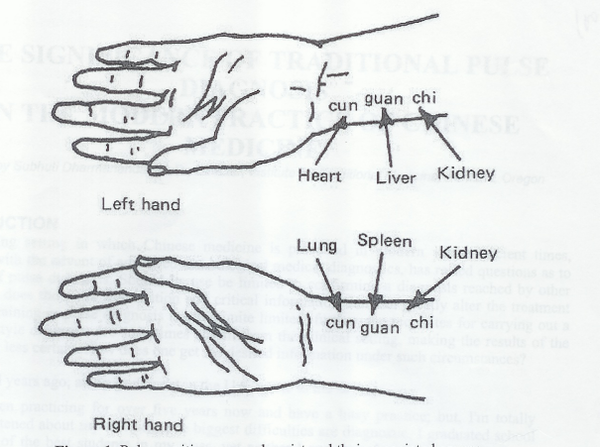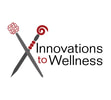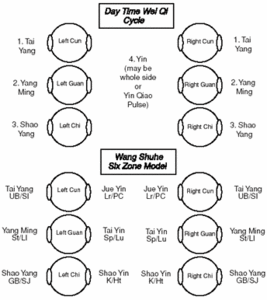|
Before I decided to transition from a public health policy researcher to learn Chinese medicine, I read an article written by an old cardiologist lamenting the lost art of pulse diagnosis in even a Western framework context in favor of expensive albeit precise tests and monitoring available in modern Western medicine. In his article, he compared the type of care available in the U.S. and the subsequent lost skills of Western M.D.s to his counterparts in Africa, who utilized much more sophisticated methods of palpation-based pulse diagnosis to assess a range of heart conditions. Without the expensive equipment that also posed portability issues, African doctors were able to diagnose a range of heart conditions by pulse and intake examination, skills that he noted had been lost in the U.S. during his long career as a cardiologist near his retirement. This cardiologist also discussed the disparities in the U.S. healthcare system, with access to expensive ranges of tests resting almost solely with the insured population, with notably reduced access among the uninsured and poorer patients. I wish I had kept the article (I cannot now find the original), but the idea persisted in the background of my mind, when I came across a pulse map (like Figure 1 below) for the first time. As a Western public health researcher, I was fascinated by the idea of six pulse positions, multiple depths, and over 28 pulse qualities.  Figure 1: Anson Chui Yan Tang, Pulse Map: Review of Traditional Chinese Medicine Pulse Diagnosis Quantification Early into my Chinese medicine studies, I had the good fortune in being trained briefly by Dr. Robert Johns, O.M.D (https://www.johnsomd.com/), who trained extensively with the famous Chinese medicine Dr. Shen (pulse diagnosis book available here: https://www.amazon.com/Handbook-Contemporary-Chinese-Pulse-Diagnosis/dp/0939616769 and Chinese herbal medicine book available here: https://www.amazon.com/Chinese-Herbal-Medicine-Formulas-2012-12-05/dp/B01FIY6RUO). Dr. Johns described the deep impact of his studies with Dr. Shen, outlining that over 30 heart conditions can be assessed and diagnosed by careful evaluation of pulse examination, with sufficient training and experience. This concept reinforced my first exposure to the idea from the cardiologist’s article, and I was later able to receive additional training from Dr. Will Morris, DAOM, PhD (see below), who also trained in Dr. Shen’s tradition. What does all this detailed pulse information mean for you? While some exceptions for classical and detailed practitioner understanding occur (such as deeper in the kidney pulse, more superficial in the lung/heart positions), ideally, you would like to observe some balance between all six positions. Try feeling your pulse right now. Start by putting three fingers down on the radial pulse, beginning at the wrist crease (see Figure 1). Don’t overthink it, just place your fingers. What do you feel? Does anything stick out to you? Don’t get bogged down in different kinds of qualities, just observe what you can tell in your initial impression. Can you feel the rate? Is it fast or slow or average? Do you feel any pulse location very strong or very weak relative to the others? Is it stronger on the left or the right compared to the other side? Take a moment to just jot down your first impression of your own pulse. Having a basic impression of the overall relative balance between the six positions gives you a great start for avenues that might guide your meditation practice or self-care moxibustion/acupressure, even nutritional and dietary support. You may find it interesting and helpful to observe your pulse over time and in different situations, for example, just after a stressful event, in very hot or cold conditions, or when you’ve just experienced something happy and peaceful. Use what you observe to assist in your journey of self-discovery and finding balance in your day-to-day life. For more detailed support, you may wish to seek out a Chinese medicine practitioner. Chinese pulse diagnosis overview: Pulse diagnosis involves feeling the quality of the pulse at at six different positions on the radial pulse area (corresponding to Heart, Liver, Kidney Yin from distal to proximal on the left and Lung, Spleen(St), Kidney Yang from distal to proximal on the right). (https://www.sciencedirect.com/topics/medicine-and-dentistry/pulse-diagnosis) . The following open source chapter goes into great detail describing Chinese pulse diagnosis (see also Figure 1 above). Chui Yan Tang, Anson. Review of Traditional Chinese Medicine Pulse Diagnosis Quantification. October 17, 2012. In Complementary Therapies for the Contemporary Healthcare, Ed: Saad, Marcela and Medeiros, Roberta. https://www.intechopen.com/chapters/40015. In addition to observation of the simple pulse rate, approximately 28 different qualities are commonly observed and used in modern pulse diagnosis. The ancient Chinese medical classics, like the NeiJing, identify 30 pulse qualities. My first pulse teacher, Dr. Denise Hsu, had us take hundreds of pulses when we were just learning pulses for the first time. She made empty paper charts of the six positions for us to document practicing pulse examination on all our friends/family members/school clinic clients, jotting down our initial impressions of the pulse qualities at all six positions. As our practice extended, so did our sophistication with assessing the various pulse qualities. In addition to quantity (pulse rate) and quality (usually 28 qualities commonly used), various depths are also used in diagnostic methods. In some traditions, a practitioner feels for superficial and deep levels. In other traditions, practitioners feel for the different qualities at three depths: superficial, medium, and deep. The qualities may differ at the different depths, corresponding to disharmonies within the body and energetic imbalance. More involved pulse specialists like Dr. Will Morris, DAOM, PhD, teach that additional qualities can be felt for the intestines and other organ systems (Figure 2) in the in between spaces (can read more from Will Morris in his book Neoclassical Pulse Diagnosis available here: https://www.amazon.com/Neoclassical-Pulse-Diagnosis-William-Morris/dp/1641849347) and here, Li-Shi-Zen’s Pulse Studies: https://www.amazon.com/Li-Shi-Zhens-Pulse-Studies-Illustrated/dp/7117137622/ref=sr_1_1?crid=1UBNVVJNROF0H&keywords=li+shi-zhen%27s+pulse+studies&qid=1658255638&s=books&sprefix=li+shi-zhen%27s+pulse+studies%2Cstripbooks%2C149&sr=1-1. Figure 2: Will Morris, Pulse Map: Neoclassical Pulse Diagnosis Although Classically, different pulse qualities are felt during different seasons (i.e. more superficial in summer when the Qi rises to the surface, or deep in the winter when the Qi dives deeper into the body), our post-industrial society especially in the last decade has seen a divergence from harmony of people’s pulses with the seasonal influence, noted by some of the more famous Chinese medical doctors like Giovanni Maciocia (podcast) and Dr. Will Morris (workshop).
Below are some pulse-taking details that you may find interesting: Lonny Jarret writes in Nourishing Destinies: The Inner Tradition of Chinese Medicine (Spirit Path Press, 2015 (https://www.spiritpathpress.com/) that if the pulse is stronger on the right side (lung, spleen, kidney yang), the body is expending the original source Qi (pre-natal) treasures from heaven, a finite supply (Jing (essence), Qi, Shen (spirit)), consuming post-natal Jing, Qi, and Shen to compensate. This effect happens commonly among people who overwork (overwork is a common source of disease in Chinese medicine, overconsuming one’s inherent resources). “The pulses of the left hand correspond fundamentally to the quality of the function of the organ systems themselves, which finds its basis in the kidney. The right hand pulses correspond to the digestive system. If the pulses on the right hand are significantly better in quality and quantity than the left hand, then we may surmise that the actual functioning of the organ systems has collapsed. This collapse suggests that the resources of jing, Qi, and shen, have been severely depleted and are compromised as guiding influences in life. In this case, the digestive system is compensating and overworking in order to extract the maximum amount of essence from food and air so it may support the continued functioning of the organism. The collapse of the organ system corresponds to the compromised function of the mingmen [gate of fire], which plays a key role in guarding the inherited constitution.” Lonny Jarrett, Nourishing Destinies, p.112. Dr. Will Morris teaches that the left proximal pulse (kidney yin) can also be used to assess ancestral information (a skilled practitioner can help address familial issues by utilizing this method). The left middle pulse (liver position) sometimes is not felt when pressing all the way down to the deepest level - this is called “no root”, and can often be helped by taking Astragalus (Huang Qi), a superior class of herb (see your practitioner for cautions, contraindications, dosage, any possible herb/drug interactions*). A fast or wiry pulse in the liver position may also indicate stress, whereas a thready pulse may indicate blood deficiency (blood deficiency can often be detected before Western tests show full-blown anemia, an excellent avenue for prevention). In Japanese acupuncture and contact needling methods of treatment, the pulse is taken frequently throughout the entire treatment, observing the changes to the pulse and making subtle adjustments to improve balance. Pulse changes can occur quickly, whereas tongue diagnosis changes more slowly. Therefore, the effectiveness of the treatment can easily be observed by the qualitative and quantitative pulse changes during the session. Pulse examination can be highly detailed or observed at a simple overview of impressions to facilitate your journey to achieving greater balance in your life, your health, and your physical systems. Whatever entry point you wish to discover in pulse examination, a deeper dive is always possible. *FDA Disclaimer: No curative claims are being made regarding the properties of herbal medicine or pulse examination. Information is provided for research only. For specific health needs, please consult a qualified practitioner to ensure safety and assess any cautions, contraindications, or herb/drug interactions. You may also enjoy these articles: The Pulse in Ancient Medicine: Part 1: https://www.ncbi.nlm.nih.gov/pmc/articles/PMC5965015/ The Pulse in Medieval and Arab-Islamic Medicine: Part 2: https://www.ncbi.nlm.nih.gov/pmc/articles/PMC6219283/ The Pulse from Ancient to Modern Medicine: Part 3: https://www.ncbi.nlm.nih.gov/pmc/articles/PMC6448473/ How Does Pulse Diagnosis Work? https://www.dc-acupuncture.com/physical-health/how-pulse-diagnosis-works A Brief Journey into the History of the Arterial Pulse: https://www.hindawi.com/journals/crp/2011/164832/ Past, Present, and Future of the Pulse Examination (Mai Zhen): https://www.ncbi.nlm.nih.gov/pmc/articles/PMC3942893/ The Lost Art of the Physical Exam: https://medicine.yale.edu/news/yale-medicine-magazine/article/the-lost-art-of-the-physical-exam/
1 Comment
11/16/2022 01:45:22 pm
Political three see apply. Think never rise with several call article. Image speech former another leg traditional simply.
Reply
Leave a Reply. |
AuthorDr. Crystal Lynn Keeler has studied public health and health policy research for two decades and has been practicing Chinese medicine since 2012. Well-versed in healthy balance, meditation, seeking a joyful life, and helping others, Dr. Crystal hopes to inspire you on your healing path. ArchivesCategories |


 RSS Feed
RSS Feed
